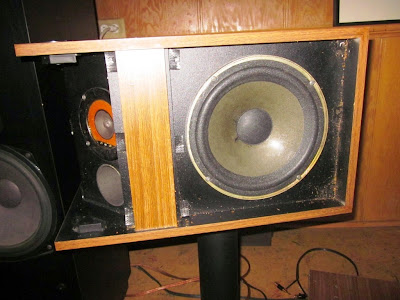This fine Toshiba SA-5000 re branded as Aurex SA-5000 was a recent gem of a find.When I picked it up the guy said a channel cuts in and out.
I opened it up and gave the pots and switches a good blast with De-Oxit and it has been giving me smooth uncoloured sound for a few days now.
Some say that Aurex was up market Toshiba line, I believe it was probably a house brand for a large retailer as there is no difference between the Aurex SA-5000 and the Toshiba SA-5000.
As far as brands go Toshiba was on top of their game in television in the 80's but their audio line is very far under the radar. Toshiba prided itself on quality and it really shows in this receiver.
Aesthetically it is attractive and the 50WPC is warm, detailed and a pleasure to listen to for hours on end.
The sound stage is spot on and works well all my speakers in the collection. What a treat.
Further specs can be found over at HiFi Engine
I opened it up and gave the pots and switches a good blast with De-Oxit and it has been giving me smooth uncoloured sound for a few days now.
Some say that Aurex was up market Toshiba line, I believe it was probably a house brand for a large retailer as there is no difference between the Aurex SA-5000 and the Toshiba SA-5000.
As far as brands go Toshiba was on top of their game in television in the 80's but their audio line is very far under the radar. Toshiba prided itself on quality and it really shows in this receiver.
Aesthetically it is attractive and the 50WPC is warm, detailed and a pleasure to listen to for hours on end.
The sound stage is spot on and works well all my speakers in the collection. What a treat.
Further specs can be found over at HiFi Engine


























